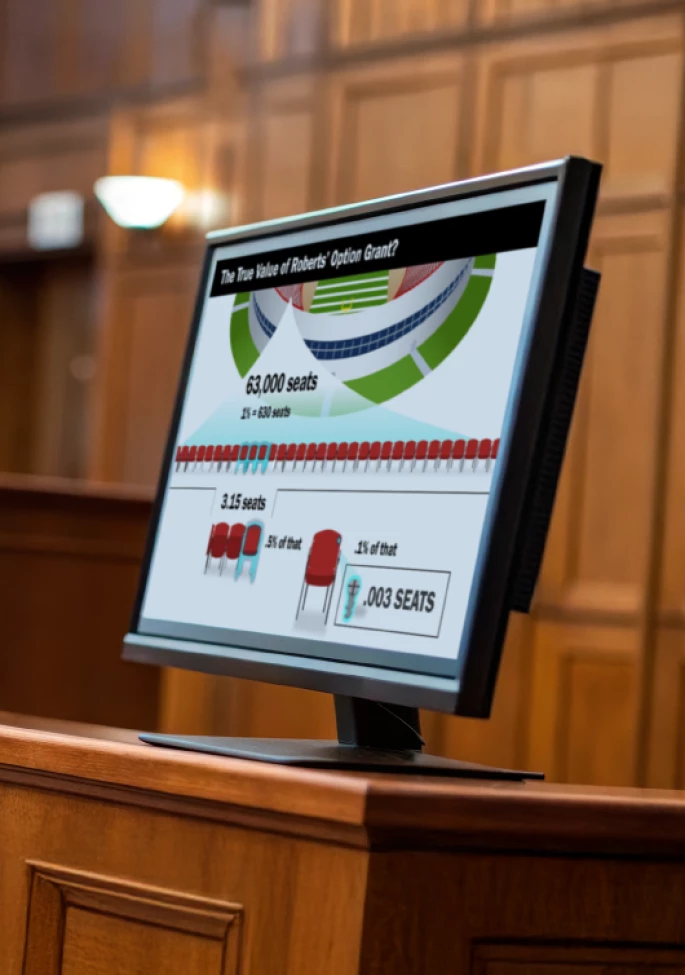When It Is Time to Close
Imagine this: The jury just sat through two weeks of testimony with duplicative questions and answers throughout. You put together an excellent opening statement slide deck. You used effective video deposition clips and transcript pages to cross-examine your witnesses. You had an interactive map that your expert walked the jury through and was crossed on. You used the latest trial presentation software to do annotations and callouts on at least 15 documents per witness—and opposing counsel did the exact same thing.
In other words, both sides were great at utilizing technology and trial graphics.
Congratulations, it was perfect. To jurors, it was also a lot. And now it is time to close. At this point, jurors have seen the many details both sides have to offer, in all their visual glory. But with so much already covered, if your closing rehashes many of the exact same trial graphics, slides, and animations in the exact same way, you are going to put a severe strain on jurors’ attention.
Closing arguments are about capitalizing on your best points. They are about offering jurors a concise reminder of your story, themes, and their supporting arguments—and of course, explaining why that means they should render a verdict in your favor.
Under most circumstances, graphics are still a crucial part of that closing. The trick is to limit or simplify those graphics to better suit your goals.
How to Simplify Your Closing Argument Presentation
Minimize Movement
For trial graphics like timelines, flow charts, and financial charts that involved numerous animated steps when they were first presented, skip the animations and show the graphic completely built. Or, if you do need to show some animated sequences, try to cut out excess steps as much as possible.
One way is to focus on the thematic concepts these graphics are communicating and break up the animations accordingly. Jurors just need enough to stimulate their recall of your main themes.
Condense Documents
If you are showing key documents that were already used numerous times with numerous witnesses, you should use them sparingly in closing.
For example, if one of your themes concerned worker safety at a chemical plant, and you showed five witnesses the same set of safety procedures and regulations, remind jurors of the witnesses these documents were used for then proceed with just one slide per document that provides the first page (or so) as a prompt before cutting right to the best callouts—without any animations.
Trim Videos
The video clips you show should be your “Super Bowl commercials.” They should last no longer than one minute and preferably be short clips, such as one or two questions and answers.
Keep Notes
Preparing for your closing arguments is something most attorneys do long before opening statement. But in addition, you should keep a running list of the points you make with your witnesses and opposing counsel’s witnesses—to include any trial graphics, documents, and video clips you used. This will save you time as you finalize your closing, so you are not scrambling to remember what was used with each witness.
Final Thoughts
It is not always easy to think about your closing arguments and what information you should present after a long, complicated trial. So, try coming at it from a jurors’ perspective—rather than overwhelm or bore them with a rushed repeat of everything they have seen before, give them a story focused on driving home the key themes and reasons to find for your client.
View this article on The National Law Review here: How to Effectively Include Trial Graphics In Closing Arguments (natlawreview.com)







